
Usaquén: The Enchanting Colonial Gem of Bogotá
Explore Usaquén, Bogotá's charming colonial neighbourhood, known for its historic architecture, vibrant flea market, and diverse culinary delights.
Nestled in the northern part of Bogotá, Usaquén is a charming neighbourhood that exudes colonial charm and modern vibrancy. Known for its cobblestone streets, historic architecture, and a bustling market scene, Usaquén is a delightful escape from the urban hustle. The neighbourhood's rich history dates back to the pre-Hispanic era, and its colonial past is beautifully preserved in its buildings and churches, making it a picturesque spot for history enthusiasts and photographers alike. Usaquén's allure is not just in its past; it is a dynamic area brimming with contemporary attractions. The Parque de Usaquén is the heart of the neighbourhood, often hosting lively events, local musicians, and artists. The Usaquén Flea Market, held every Sunday, is a must-visit, offering a treasure trove of handcrafted goods, antiques, and gourmet street food. The market is a sensory delight, with vibrant colors, enticing smells, and the joyful hum of vendors and visitors. Gastronomy is another highlight of Usaquén. The neighbourhood is home to an array of restaurants, ranging from traditional Colombian eateries to upscale international dining options. Whether you are in the mood for a hearty ajiaco or a sophisticated fusion dish, Usaquén's diverse culinary scene will not disappoint. As the sun sets, the neighbourhood transforms into a lively nightlife hub, with cozy bars and live music venues perfect for unwinding after a day of exploration.
Local tips in Usaquén
- Visit the Usaquén Flea Market on Sundays for unique handmade crafts and local delicacies.
- Explore the historic Iglesia de Santa Bárbara for a glimpse into colonial architecture.
- Stroll through Parque de Usaquén in the evening to enjoy local music and street performances.
- Make dinner reservations in advance, especially for popular restaurants, to avoid long waits.
- Wear comfortable shoes as the cobblestone streets can be uneven.
Usaquén: The Enchanting Colonial Gem of Bogotá
Nestled in the northern part of Bogotá, Usaquén is a charming neighbourhood that exudes colonial charm and modern vibrancy. Known for its cobblestone streets, historic architecture, and a bustling market scene, Usaquén is a delightful escape from the urban hustle. The neighbourhood's rich history dates back to the pre-Hispanic era, and its colonial past is beautifully preserved in its buildings and churches, making it a picturesque spot for history enthusiasts and photographers alike. Usaquén's allure is not just in its past; it is a dynamic area brimming with contemporary attractions. The Parque de Usaquén is the heart of the neighbourhood, often hosting lively events, local musicians, and artists. The Usaquén Flea Market, held every Sunday, is a must-visit, offering a treasure trove of handcrafted goods, antiques, and gourmet street food. The market is a sensory delight, with vibrant colors, enticing smells, and the joyful hum of vendors and visitors. Gastronomy is another highlight of Usaquén. The neighbourhood is home to an array of restaurants, ranging from traditional Colombian eateries to upscale international dining options. Whether you are in the mood for a hearty ajiaco or a sophisticated fusion dish, Usaquén's diverse culinary scene will not disappoint. As the sun sets, the neighbourhood transforms into a lively nightlife hub, with cozy bars and live music venues perfect for unwinding after a day of exploration.
Iconic landmarks you can’t miss
Usaquén Park
Immerse yourself in the tranquil beauty and cultural richness of Usaquén Park, a must-visit destination in Bogotá, Colombia.

Usaquén Flea Market
Explore the colorful Usaquén Flea Market in Bogotá, a vibrant hub of local crafts, food, and culture, perfect for an immersive Colombian experience.

Usaquén Plaza
Discover Usaquén Plaza, a vibrant shopping mall in Bogotá filled with unique shops, delicious dining, and lively entertainment options for every traveler.
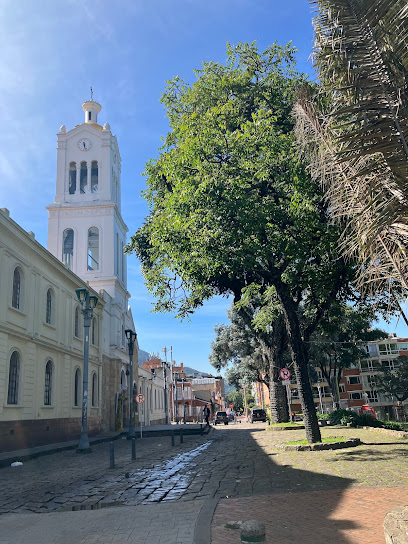
Unique Mine - Smart Lofts
Experience urban luxury and local charm at Unique Mine - Smart Lofts in the heart of Bogotá's Usaquén district, perfect for your next getaway.

Usaquen bogota
Discover the charm of Usaquén, Bogotá, where history meets modernity in a delightful neighborhood perfect for exploration and relaxation.

Calle de la Peña
Experience the historical charm and vibrant culture of Calle de la Peña in Bogotá, a must-visit destination for every traveler.
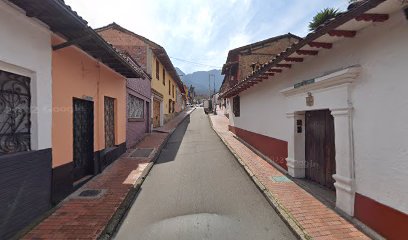
Patio de la Memoria
Discover the essence of Bogotá at Patio de la Memoria, a historical landmark that celebrates Colombia's rich cultural heritage and resilience.

Plaza de Guillermo
Explore the rich heritage and vibrant atmosphere of Plaza de Guillermo, a historical landmark in the heart of Bogotá's charming Santa Barbara neighborhood.

Herencia Universal
Explore the vibrant heritage of Colombia at Herencia Universal, a captivating local history museum in the heart of Bogotá's Usaquén neighborhood.

Antigua valla publicitaria
Explore the captivating history of Antigua Valla Publicitaria, a unique landmark in Bogotá's vibrant Usaquén district, reflecting the city's rich advertising heritage.

Bogotá Colombia
Explore Bogotá, Colombia's vibrant capital, where rich history meets contemporary culture amidst stunning landscapes.

Unmissable attractions to see
Gold Museum
Explore Bogotá's Gold Museum, a treasure trove of pre-Hispanic gold artifacts showcasing Colombia's rich cultural heritage and artistry.

Maloka Museo Interactivo
Explore Maloka Museo Interactivo in Bogotá, a fun, hands-on science museum perfect for families and curious minds alike.

El Country Park
Experience the lush greenery and serene landscapes of El Country Park, a perfect urban escape in Bogotá for nature lovers and families alike.

Usaquén Flea Market
Experience the lively Usaquén Flea Market in Bogotá, where unique crafts, delicious street food, and vibrant culture await every Sunday.

Mural eclipse
Explore Bogotá's vibrant street art at Mural Eclipse, a stunning cultural landmark reflecting Colombia's rich artistic heritage.

Essential places to dine
Café Amarti
Experience fine Italian dining at Café Amarti in Bogotá's Usaquén district—where authentic flavors meet family-friendly hospitality.
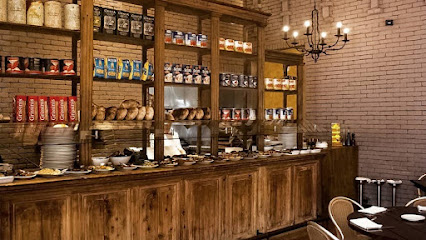
Santa Costilla Usaquén
Experience authentic Colombian flavors at Santa Costilla Usaquén - where tradition meets culinary excellence in Bogotá's vibrant dining scene.
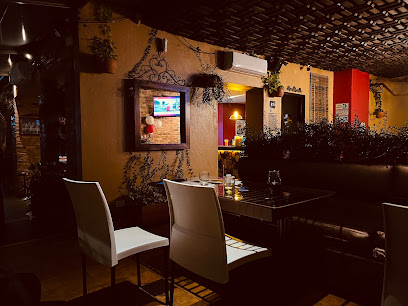
Kathmandu
Explore Kathmandu's rich heritage through its temples, vibrant markets, and mouthwatering cuisine in this captivating Himalayan capital.

Osaki Usaquén
Experience exquisite Asian cuisine and vibrant cocktails at Osaki Usaquén - a must-visit dining destination in Bogotá's charming Usaquén district.

Chalet Suizo Usaquén
Experience the enchanting blend of Colombian flavors and Swiss charm at Chalet Suizo Usaquén - a culinary gem in Bogotá.
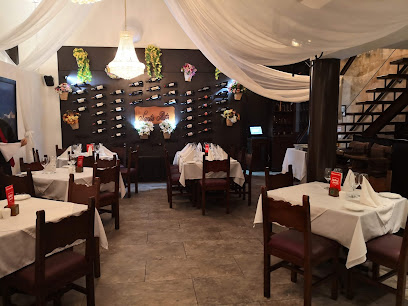
Italia Rustica
Experience authentic Italian cuisine at Italia Rustica in Bogotá – where tradition meets taste in a cozy atmosphere.

14inkas
Experience authentic Colombian cuisine at 14inkas in Usaquén, Bogotá - where tradition meets innovation in every bite.
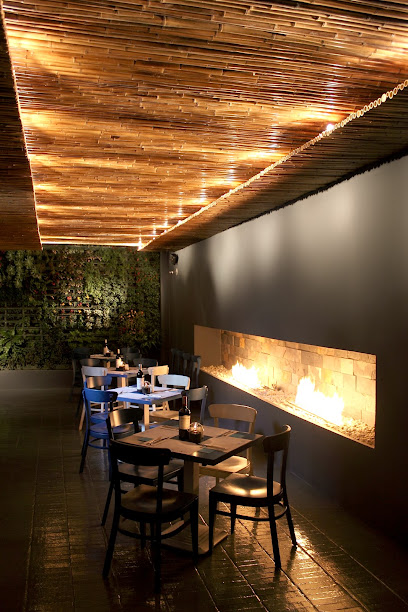
EL LEGADO DE LA MONA
Experience authentic Colombian flavors at El Legado de la Mona in Bogotá - where tradition meets taste in a warm atmosphere.
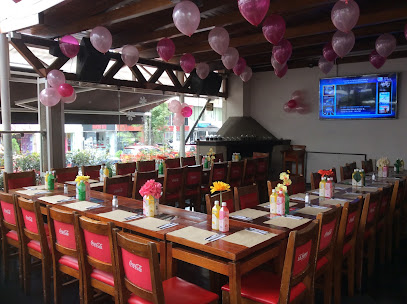
Heaven Bistro, Usaquén
Discover culinary excellence blended with artistic expression at Heaven Bistro in Usaquén - where every meal is a masterpiece.

Lounge de Andrei
Discover the flavors of Colombia at Lounge de Andrei in Bogotá's charming Usaquén neighborhood—where culinary artistry meets inviting ambiance.

Markets, malls and hidden boutiques
Santa Ana Mall
Discover Bogotá's Santa Ana Mall: A shopping paradise filled with diverse stores, dining options, and entertainment, perfect for all visitors.

Usaquén Plaza
Discover Usaquén Plaza: Bogotá's vibrant shopping mall with diverse shops, delightful dining, and a lively cultural atmosphere.

Awa Colombia
Explore Awa Colombia for unique handicrafts and authentic souvenirs that capture the essence of Colombian culture in Bogotá.

Mambe Shop
Explore Mambe Shop in Bogotá for authentic Colombian handicrafts, a blend of tradition and artistry that captures the essence of Colombia.

Bamba Regalos & Diseño
Discover the charm of Colombian craftsmanship at Bamba Regalos & Diseño, your go-to gift shop in Bogotá for unique jewelry and souvenirs.

AMBARDAE
Explore AMBARDAE in Bogotá for exquisite local crafts and unique gifts that embody Colombian culture and artistry.

Acuaró Artesanías & Regalos
Explore Acuaró Artesanías & Regalos in Usaquén for unique Colombian crafts and souvenirs that embody the spirit of Colombia's rich culture.

Muy Colombia
Explore the vibrant culture of Colombia through unique souvenirs and artisan crafts at Muy Colombia in Bogotá.

CREATEKO S.A.S
Explore the vibrant collection of unique bags at CREATEKO S.A.S in Usaquén, Bogotá, where craftsmanship meets contemporary style.

Importados de Estados Unidos
Discover a unique shopping experience at Importados de Estados Unidos in Bogotá, where imported goods meet local culture in a vibrant setting.

Essential bars & hidden hideouts
Bar Shamua
Experience the vibrant nightlife and delicious grilled cuisine at Bar Shamua, a must-visit bar and grill in Bogotá's San Patricio neighborhood.

Bogota Beer Company
Discover the essence of Bogotá's craft beer culture at Bogota Beer Company, where flavorful brews and delicious Colombian cuisine await.
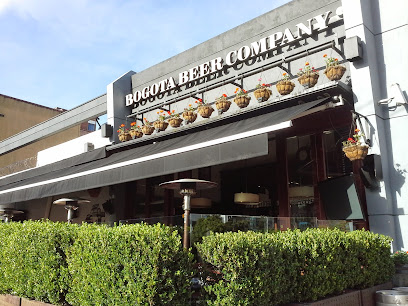
Pedro Mandinga Rum Bar Bogota
Discover the vibrant culture of Bogotá at Pedro Mandinga Rum Bar, where exceptional rums and lively atmosphere come together for an unforgettable night.

Rock & Roll Circus
Discover Bogotá's vibrant nightlife at Rock & Roll Circus, where live music meets a lively bar atmosphere for an unforgettable night out.

El Irish Pub
Experience the charm of Ireland in Bogotá at El Irish Pub, offering a delightful selection of beers, traditional Irish dishes, and vibrant local events.

Pong
Discover Pong in Bogotá: A lively sports bar and table tennis club offering great food, drinks, and entertainment in a vibrant atmosphere.

El Monje Bar Restaurante
Discover the lively atmosphere and delicious local cuisine at El Monje Bar Restaurante, a must-visit bar and restaurant in Bogotá's Usaquén neighborhood.

The Eight Bells
Discover the vibrant nightlife of Bogotá at The Eight Bells, a lively pub offering local drinks, a friendly atmosphere, and an unforgettable experience.

El Sabio Cócteles y Cervezas
Discover the vibrant flavors of Bogotá at El Sabio Cócteles y Cervezas, where grilled specialties meet creative cocktails in a cozy atmosphere.

Mr Bum Audiobar
Discover the vibrant atmosphere and exquisite wine selection at Bogotá's Mr Bum Audiobar, the perfect spot for socializing and unwinding.

Gin Garden Pub
Discover Gin Garden Pub in Bogotá: a vibrant bar offering exquisite gin cocktails, a cozy atmosphere, and a taste of local nightlife.

Mala Vida Wine Bar
Unwind at Mala Vida Wine Bar, where exquisite wines meet a cozy atmosphere in Bogotá's vibrant Usaquén district.

Local Phrases
-
- HelloHola
[O-la] - GoodbyeAdiós
[Ah-di-ohs] - YesSí
[See] - NoNo
[Noh] - Please/You're welcomePor favor/De nada
[Por fa-vor/Deh nah-dah] - Thank youGracias
[Gra-syas] - Excuse me/SorryPerdón/Lo siento
[Pair-dohn/Loh see-en-toh] - How are you?¿Cómo estás?
[Koh-moh es-tahs] - Fine. And you?Bien. ¿Y tú?
[Byen. Ee too] - Do you speak English?¿Hablas inglés?
[Ah-blas een-glays] - I don't understandNo entiendo
[Noh en-tyen-doh]
- HelloHola
-
- I'd like to see the menu, pleaseMe gustaría ver el menú, por favor
[May goo-sta-ree-a ver el me-noo, por fa-vor] - I don't eat meatNo como carne
[Noh koh-moh kar-neh] - Cheers!¡Salud!
[Sah-loohd] - I would like to pay, pleaseQuisiera pagar, por favor
[Key-see-eh-ra pa-gar, por fa-vor]
- I'd like to see the menu, pleaseMe gustaría ver el menú, por favor
-
- Help!¡Ayuda!
[Ah-yoo-dah] - Go away!¡Vete!
[Veh-teh] - Call the Police!¡Llama a la Policía!
[Ya-ma a la Po-lee-see-ah] - Call a doctor!¡Llama a un médico!
[Ya-ma a oon meh-dee-ko] - I'm lostEstoy perdido
[Es-toy pair-dee-doh] - I'm illEstoy enfermo
[Es-toy en-fehr-moh]
- Help!¡Ayuda!
-
- I'd like to buy...Me gustaría comprar...
[May goo-sta-ree-a kom-prar] - I'm just lookingSolo estoy mirando
[So-loh es-toy mee-ran-doh] - How much is it?¿Cuánto cuesta?
[Kwan-to kwe-stah] - That's too expensiveEsto es demasiado caro
[Es-to es de-ma-sya-do ka-ro] - Can you lower the price?¿Puedes bajar el precio?
[Pwe-des ba-har el pre-syo]
- I'd like to buy...Me gustaría comprar...
-
- What time is it?¿Qué hora es?
[Keh o-rah es] - It's one o'clockEs la una
[Es la oo-nah] - Half past (10)Las diez y media
[Las dyehs ee me-dyah] - MorningMañana
[Mah-nyah-nah] - AfternoonTarde
[Tar-deh] - EveningNoche
[Noh-cheh] - YesterdayAyer
[Ah-yer] - TodayHoy
[Oy] - TomorrowMañana
[Mah-nyah-nah] - 1Uno
[Oo-noh] - 2Dos
[Dohs] - 3Tres
[Tres] - 4Cuatro
[Kwah-troh] - 5Cinco
[Seen-koh] - 6Seis
[Sayss] - 7Siete
[Syeh-teh] - 8Ocho
[Oh-choh] - 9Nueve
[Nweh-veh] - 10Diez
[Dyehs]
- What time is it?¿Qué hora es?
-
- Where's a/the...?¿Dónde está...?
[Dohn-de es-tah] - What's the address?¿Cuál es la dirección?
[Kwahl es la dee-rek-syon] - Can you show me (on the map)?¿Puedes mostrarme (en el mapa)?
[Pwe-des mos-trar-me (en el ma-pa)] - When's the next (bus)?¿Cuándo es el próximo (autobús)?
[Kwan-do es el proh-ksee-moh (ow-to-boos)] - A ticket (to ....)Un boleto (a ...)
[Oon boh-leh-toh (ah)]
- Where's a/the...?¿Dónde está...?
History of Usaquén
-
Before the arrival of the Spanish, the region of Usaquén was inhabited by indigenous groups, notably the Muisca people. They established a network of settlements in the Bogotá savanna, engaging in agriculture and trade. Usaquén, with its fertile lands, played a crucial role in the Muisca economy, which was based on crops like maize, potatoes, and quinoa.
-
In the 16th century, Spanish conquistadors, led by Gonzalo Jiménez de Quesada, arrived in the area. Usaquén became part of the newly established jurisdiction of Bogotá in 1538. The colonial influence is still evident in the neighborhood's architecture, with many colonial-era buildings preserving the historical character of the area.
-
During the early 19th century, Usaquén was a site of significant activity during Colombia's fight for independence from Spanish rule. Local leaders and residents participated in revolutionary efforts, contributing to the broader struggles occurring in Bogotá and the surrounding regions. The independence movement eventually led to the establishment of the Republic of Gran Colombia in 1819.
-
The 20th century saw significant transformations in Usaquén. As Bogotá expanded, Usaquén transitioned from a rural village to an urban neighborhood, experiencing considerable growth and development. The construction of new infrastructure facilitated this change, leading to a rise in population and economic activity in the area.
-
In recent decades, Usaquén has undergone a cultural renaissance, becoming a hub for arts, gastronomy, and tourism. The neighborhood is renowned for its vibrant Sunday flea market, where local artisans and vendors showcase their crafts and foods. This revitalization has made Usaquén a popular destination for both locals and visitors, celebrated for its rich history and lively atmosphere.
Usaquén Essentials
-
Usaquén is easily accessible from various parts of Bogotá. From the city center (La Candelaria), take the TransMilenio bus system to the station 'Héroes' and transfer to a feeder bus (buseta) heading to Usaquén. Alternatively, taxis and rideshare services like Uber are widely available and can provide a more direct route. The journey typically takes around 30-45 minutes depending on traffic.
-
Usaquén is best explored on foot, as many attractions are within walking distance of each other. For longer distances, you can use TransMilenio or local buses. Bicycles are also a popular option, and there are bike lanes in certain areas. Taxis and rideshare services are readily available for convenient transport.
-
Usaquén is generally a safe neighborhood for tourists, especially during the daytime. However, it's advisable to avoid certain areas after dark, such as the outskirts of the neighborhood where there may be higher crime rates. Always remain vigilant, keep an eye on your belongings, and avoid displaying valuables in crowded areas.
-
In case of an emergency, dial 123 for police assistance, 125 for medical emergencies, and 119 for fire services. Familiarize yourself with the location of the nearest hospital or medical clinic. It's also advisable to have travel insurance that covers medical care and emergencies while abroad.
-
Fashion: Do dress modestly and comfortably, particularly when visiting religious sites. Don't wear overly revealing clothing. Religion: Do be respectful of local customs; if entering churches, cover your shoulders and knees. Public Transport: Do be courteous and offer your seat to the elderly. Don't eat or drink on public transport. Greetings: Do greet locals with a handshake and a smile. Don't use overly familiar terms unless invited. Eating & Drinking: Do try local specialties and accept food offers graciously. Don't refuse hospitality, as it can be seen as disrespectful.
-
To experience Usaquén like a local, visit the Sunday flea market (Mercado de las Pulgas) where you can find artisanal crafts and local foods. Explore the quaint cobblestone streets and enjoy coffee at one of the many cafés. Engage with local vendors and ask for recommendations. Be sure to check out the neighborhood's numerous parks and plazas, which often host cultural events and live music.
Nearby Cities to Usaquén
-
Things To Do in Villavicencio
-
Things To Do in Tunja
-
Things To Do in Ibagué
-
Things To Do in Manizales
-
Things To Do in Armenia
-
Things To Do in Pereira
-
Things To Do in Neiva
-
Things To Do in Medellín
-
Things To Do in Cali
-
Things To Do in Popayán
-
Things To Do in Cúcuta
-
Things To Do in Pasto
-
Things To Do in Sincelejo
-
Things To Do in Cartagena
-
Things To Do in Ibarra








